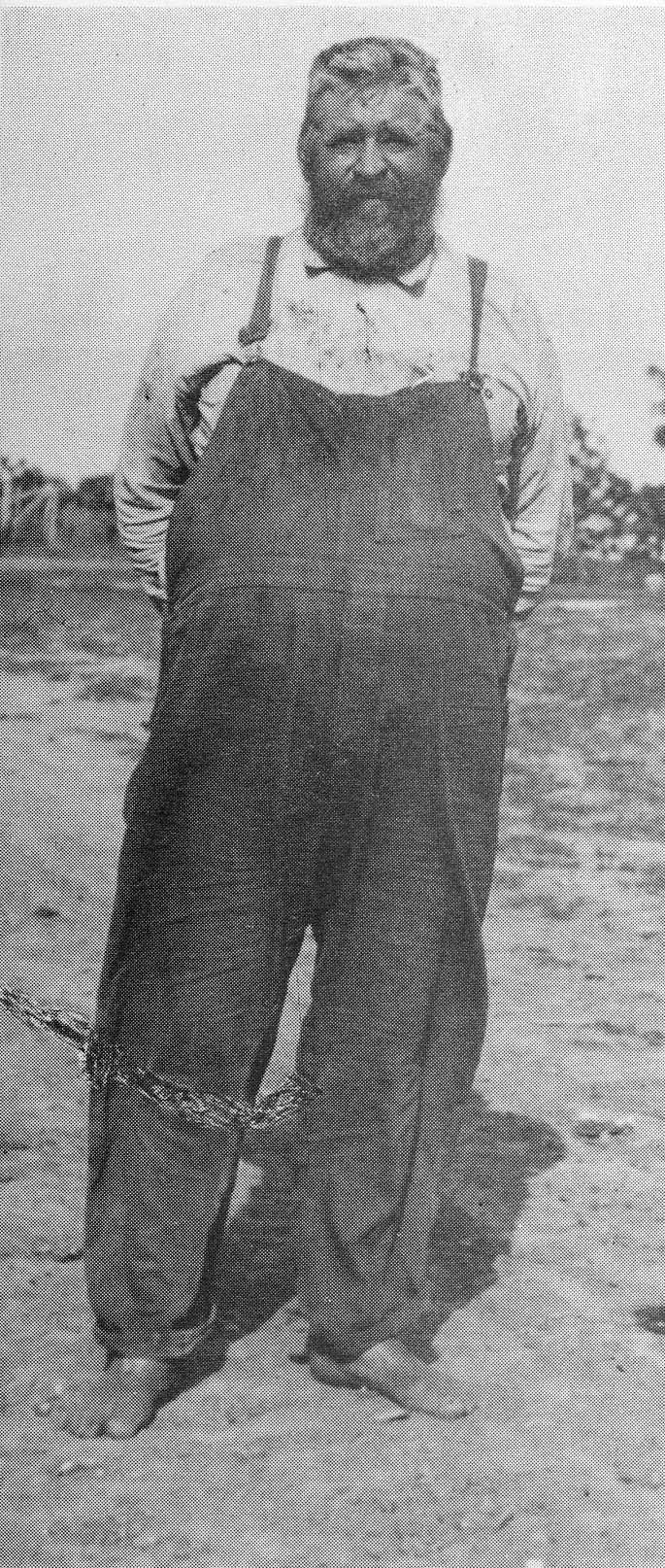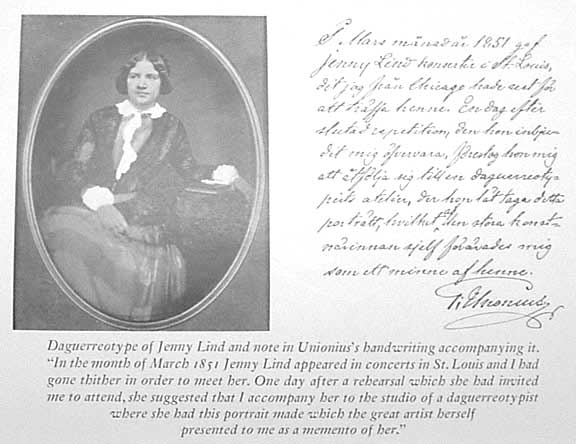Barefoot Charlie I

The phrase "barefoot Charlie" is one I remember from earliest childhood because that's what my grandma would exclaim whenever one of us showed up without shoes on. It would be many, many years later that the connection would be made with the real "barefoot Charlie." Grandma, you see, was from Polk county and she knew about the real one: Charles J. Peterson, whose obituary appeared in the November 19, 1936, paper now lying on my table.
That article explains that Mr. Peterson "preferred to walk barefoot as soon as weather permitted," thus his nickname. It also goes on to say that "while well known to most everyone in Stromsburg and vicinity, none realized what was hidden behind the rough exterior and which is now revealed in his will. He was wealthy as everyone knew, but he was a plain unassuming citizen, and as his wants were few he did not spend much on himself, and the will that has been offered for probate, reveals a truly generous character."
"He left his worldly treasure to charity and worthy public institutions, and in so doing he leaves behind him a good deed done, and surely the admiration of all... He was plain and outspoken but had a friendly word for everybody and so he lived content in his surroundings he made for himself until his health became such that he had to be cared for in a home."
That home was the Bethphage Mission in Axtell where Mr. Peterson died November 14, 1936 at age 74. We are not told whether or not he was buried with his shoes on. In "Barefoot Charlie 2" we will list the contents of the will mentioned above.
-Dalakarl
.............................
Barefoot Charlie 2
Charles J. Peterson, a local batchelor whose nickname was "Barefoot Charlie" surprised everyone with the generosity revealed in his will in 1936. As promised, we here list the details of those beneficiaries. Charlie had only a couple of second cousins as relatives.
-Stromsburg school district No. 10, $5,000
-Benedict school district No. 91, $5,000
-Stromsburg Lutheran Church Orphans' Home, $5,000
-City of Stromsburg for relief of poor and needy, $5,000
-University of Nebraska, $2,000
-City of Stromsburg for Buckley Park, $1,000
-Lutheran Church of Stromsburg for purchase of pipe organ, $1,500
-All other parent churches in Stromsburg, $100 each
-Stromsburg Cemetery Association, $1,000
-$25 to the minister officiating at his funeral
-National Conference of Seventh Day Adventists, $1,000
-Hospital for Tuberculosis at Kearney, $1,000
-Orthopedic Hospital at Lincoln, $1,000
-Soldiers and Sailors Home at Milford, $1,000
-Nebraska School for the Blind at Nebraska City, $2,000
-Nebraska School for the Deaf at Omaha, $2,000
-Nebraska Home for Dependent Children at Lincoln, $2,000
-Nebraska State Board of Education Lands and Funds for distribution to High Schools: any remaining funds
To a relative went the 120 acre farm and $5,000.
Let's tip our hats to "Barefoot Charlie." It was true that contest of the will took place and dramatically reduced the amounts intended...but that would amount to finding "every silver lining has a dark cloud." Charlie died believing in the good he had intended.
-Dalakarl
.................................
Professor Dan
If you had a chance to go to the Danish town of Dannebrog to hear a Swede talk about Indians, wouldn't you go? That would be a chance not to be missed. What circumstances would create a setting like that? You are about to find out.
In the early 1870's, about the time Polk county was being born, the Pawnee Indians were desperately trying to survive up on their Genoa area reservation. A store in downtown Omaha called Meyers Indian Wigwam was selling Indian craft items to immigrants fascinated by that sort of thing and there were many such customers.
So some enterprising Pawnees would secure permission to take the new Union Pacific train down to Omaha for some extra cash. Meanwhile, some enterprising Swedes in a bar across the street from Meyers cooked up the idea of displaying live Indians in colorful native dress in a miniature version of Buffalo Bill's Wild West Shows which were all the rage.
The idea worked. So well did it work that the Swedes decided to take their show on the road, even as far as Europe and Sweden itself. Plus it would be a chance to visit the old country again. So three Pawnees; White Fox, Red Fox and White Eagle became very likely the first of their tribe to cross the Atlantic and go AWOL from Genoa.
Professor Dan has written a book about this adventure called "White Fox's Long Journey." His connections with Dannebrog have to do with the Pawnee Center downtown there. His position on the faculty of the Carolinska Institute medical school in Stockholm put him in touch with this story. Only a few years ago did that school arrange through the U.S. Embassy in Sweden and the Pawnee Nation of Oklahoma to have the remains of White Fox, who died during his tour of Sweden, returned to the U.S. for a proper burial.
It was a complete surprise to learn that Professor Dan planned a stop in Stromsburg the very next day. Some of you were able to meet him as I was honored to show him around town. He generously donated a copy of his book to the library. It is in Swedish, but an abridged English version can be found in the journal of the Nebraska Historical Society, Summer 2014 edition. Check that out if you are interested because there is "more to the story" than told here.
-Dalakarl
...............................
Nelson the Tailor, Part 2
That item was an ad for the "John Olson and Company, Leading Tailors and Cleaners, York, Nebraska." The point of the announcement was that their company truck would be in Stromsburg on Wednesdays and Saturdays to provide made-to-measure suits, clothing repairs or dry cleaning services.
The "and Company" part of the story is of special interest to the writer because, as detailed in an earlier column, one of the staff at Olson's was great grand-uncle John Nelson. Could he have been one of those traveling to Stromsburg on Wednesdays and Saturdays? Could he have been tailoring or repairing garments worn by our relatives here? Fascinating questions to be sure.
Rounding out the story was a recent piece by Gene Fischer in the York Advantage paper in which he describes early businesses in downtown York, especially those with the large, square "false fronts" that were so common. There are a few of these that come to mind in our Polk county towns, but the one spotted in York was very remarkable. Just south of the theater, on the main street, one such shop had been moved to the back of the lot when a new store building was constructed. It remains there today, false front and all. It had started life as a harness shop, and then...you guessed it...became Olson's Tailor shop.

Another incredible survivor of the immigrant days!
-Dalakarl
................................
"Goose Bumps"
Once in a while a discovery is made in genealogy which, as one member said at our last meeting, gives you "goose bumps." That has only happened to me a couple of times, but this last instance is one you should know about.
It was only at the end of a long process that these two local amateur genealogists identified more about their ancestral homes in the Swedish province of Östergötland. Let's take a second to talk about that word. Öster means "east." Götland is "Goth Land." Yes, this is the region from which the Goths originated, the same ones who gave us the word "gothic" in archetectural style in a later period of their existence on mainland Europe. There is also a "goth" style of weird dress which young people know about, but not me.
"Göteborg," the city, is in the neighboring province, Västergötland (West Götland) and is the origin of the name Gothenburg as in Gothenburg, Nebraska, but I can almost guarantee that if you heard this name pronounced in Sweden you wouldn't recognize it. That is because we have no "ö" sound in English, and both the "g's" are also pronounced differently.
Back to genealogy: there is a place in Östergötland called Tjällmo. When that name was mentioned each of the two genealogists became wide-eyed. Their exclamations caused the rest of us to stop what we were doing and listen in. Have you guessed? Both had ancestors in this same village. That word literally means "frosty heath." Think of North Dakota in winter.
Now, typical farms in Sweden were really estates of a sort, where owners of noble rank granted living rights to various forms of peasant underclass families in exchange for their labor. At Tjällmo there was an estate named Hättorp. Have you guessed? Both had ancestors on this very estate.
Now appeared the goose bumps. Two life-long residents of Polk county discovered their roots intertwined in a way neither would have imagined! This is the kind of thing that keeps us coming back to genealogy club at the library on the last Tuesday of most months. You might enjoy it, too.
-Dalakarl
...............................
"Piety Ridge"
The little town of Walnut, Iowa, where we lived for sixteen years, had a street along its eastern edge which was sometimes called "piety ridge." Apparently that was because the residents of that area were considered a cut above the rest regarding religious devotion, or perhaps considered themselves to be so...
Walnut had its share of churches; Roman Catholic, Presbyterian, a former Methodist church now made into apartments, a Danish Baptist, Missouri Synod Lutheran and the one we attended which old-timers called the German Lutheran Church but now was part of the United Church of Christ, having gone through the process of merger of German Evangelical and German Reformed (The "E and R" denomination) and finally the U.C.C.
An issue which emerged in Stromsburg in the mid-thirties was that of Sunday movies. It was decided to put the matter to a vote, which would be decided in the two precincts in Stromsburg: north and south. A dramatic divide was revealed by the outcome of this vote. The north precinct was heavily opposed to the opening of the theater on Sundays. The south precinct was heavily in favor. A tally of both sides revealed that the north prevailed by the sum of one vote!
I had never thought of Stromsburg having the equivalent of a "piety ridge" like Walnut, but maybe this vote indicates something of that sort. We might speculate that since most of the railroad employees lived in the south precinct, they voted in favor. Or perhaps those businesses near the square were in sympathy with the theater owner in simply doing the most business possible. It's hard to say whether piety was the issue at all.
The final outcome makes one think of politics at its worst, even today. Someone found that some "mail-in votes" had been sent but not counted in the original tally. Amazingly, these four votes all favored allowing the movies to be shown on Sunday and so the issue was concluded! Sunday movies won.
Does anyone else "smell a rat" in this maneuver?
-Dalakarl
...........................
More about Jenny Lind

Entertainment then as now commanded lavish budgets, and in the book it is reported that showman P.T. Barnum offered Jenny Lind $150,000 for her concert tour of America. Even more remarkable is the generousity she showed along the course of the tour and the endorsements of various products which leveraged her popularity in the marketplace.
"'Have you one of the new Jenny Lind hats? The shops are full of them. They say they are becoming to everyone...' 'The gentlemen lunching in the cafes ordered Jenny Lind dishes from the menus. The shops sold Jenny Lind jewelry...' 'Up and down the Mississippi River puffed a steamboat called the Jenny Lind...' 'And how Jenny laughed when she heard that there were even Jenny Lind teakettles! Which, the shop-keepers declared, would commence to sing within a few minutes, when placed upon the fire.'"
I am told there is a Jenny Lind bed among our family possessions, and our earlier article reported on the Jenny Lind Walking Cultivator!
Among the details of her philanthropy is this list of gifts given after her concert in Havana, Cuba:
-Ursuline Convent - $2,000
-Hospital of San Paulo - 1,000
-Hospital de Dios - 1,000
-A Poor Widow - 100
-Another Poor Widow - 100
-A Poor Man - 50
-A Reduced Artist - 250
Tak ska du har! (Thanks shall you have), Jenny Lind.
-Dalakarl
....................................
Another greatgrandparent?
Winter is not a great time for poking around cemeteries, so late last fall I made another visit to the Calvary, Swede Home, cemetery to visit relative's graves there. I was in for another surprise.
Having come to the conclusion that Amanda (Gustafson) Rodine, my great grandmother, and Mrs. C.G. (Gustafson) Johnson were sisters who came to Polk county from Varna, Illinois, I purposed to visit the C.G. Johnson gravesite at Swede Home.

There, off to the side, was a small marker for Charlotte Gustafson, 1822-1888. Earlier we wrote about immigrants who brought their aged parents from the homeland to live with them. This appears to be yet another case of immigrant senior citizens spending just a few of their latter years in America. In our family, the examples we knew of never spoke anything but their native language.
If Charlotte was indeed the mother of the Gustafson girls who married Polk county farmers, she would be my great-great grandmother! Since the C.G. Johnson family reunion might be called the "mother of all family reunions," I am hoping for a chance to confirm this with the people who would know.
Charlotte must have been a very popular name in its day. Great-grandmother Greenwall was named Charlotte, her daughter, my aunt, Mildred's middle name was Charlotte, and on my mother's side there was great-grandmother Charlotte Gustafson (no relation to the Polk county Gustafsons). So here we have a very early Charlotte. Now the latest addition is Charlotte (Mrs. Mitch) Greenwall!
-Dalakarl
...........................
America's Great Awakening
At the time Nebraska's prairies were being populated by European immigrants, the American culture was in the final phases of a religious movement called the "Great Awakening." My friend, Rev. Richard Olson, has been sharing his copies of "Christian History" with me and one of the issues covers this awakening in its three stages.
Names associated with these revivals include Jonathan Edwards, Francis Asbury, C.G. Finney and Dwight Moody. The form often included "camp meetings" which make one think of the Swedish Methodist Campground just south of Buckley Park in Stromsburg. Was it patterned after the revival camp meetings?
While this movement came and went like a spring storm over the American landscape, the Christian History source revealed some things that have endured. At its peak, and under the influence of C.G. Finney in particular, there was an emphasis going beyond the momentary call for conversions and focusing on needs of society. This was called the "Benevolent Empire," and by 1834 donations to its causes were equal to the federal budget; $130,000,000 in today's dollars!
With resources like this, programs called "the great eight" were formed. They included: The American Bible Society, the American Board of Commissioners for Foreign Missions, The American Sunday School Union, The American Tract Society, The American Temperance Society and the American Home Missionary Society. This last group aided Rev. L.P. Esbjorn in founding the Swedish Augustana pioneers at Andover, Illinois.
It's good to be reminded that when we hear the words "old time religion," we are talking about more than just revival meetings.
-Dalakarl
..................................
Catfish and Large Mouth Bass
Though at least one person has suggested that the writer makes up much of his material, let it be known that only factual material from old newspapers is reported here. But, since the following items come at second hand let the reader judge their facticity. Often stories involving fish are embellished as we all know.
Ray, believed to be an Irishman, was stacking hay along the Missouri river. Seeing a distant black form moving in the river, his fisherman's instincts were aroused. Finding some light rope in the wagon, he fastened the only hook he could find, a hayhook, on the end with a large bullfrog as bait.
"Ray flung the rope, hook and frog into the water ahead of the dark shadow. Immediately the fish took the bait. Ray set the hook and began to pull. After about a half hour Ray decided he could not bring the fish in himself. He tied the rope around a stump and ran over to the team of horses he used to pull up the stacker.
Ray tied the rope to the singletree and tried to pull the fish out. The team pulled, but because they were tired from the day's work they were unable to pull the fish from the river. Ray tied the horses to the stump and ran home to get a fresh team. Upon returning he discovered the fish was laying on the river bank. The horses were gone and the catfish was picking its teeth with the singletree."
Along the same lines, my brother-in-law was surprised when fishing for large-mouth bass to see one leap out of the water and devour a squirrel which had ventured out on a fallen log to get an acorn lying there. Some time later he noticed an acorn lying on the same log, and sure enough, a passing squirrel ventured out to get it with the same result. Fascinated, he kept fishing for that bass at that spot time after time. Then, incredibly, one day he saw the bass come to the surface with an acorn in its mouth and place it upon the log...
-Dalakarl
.........................